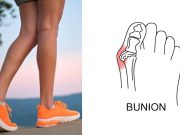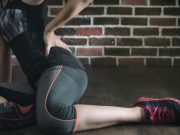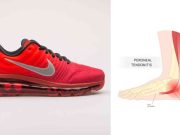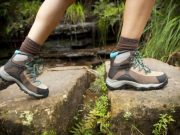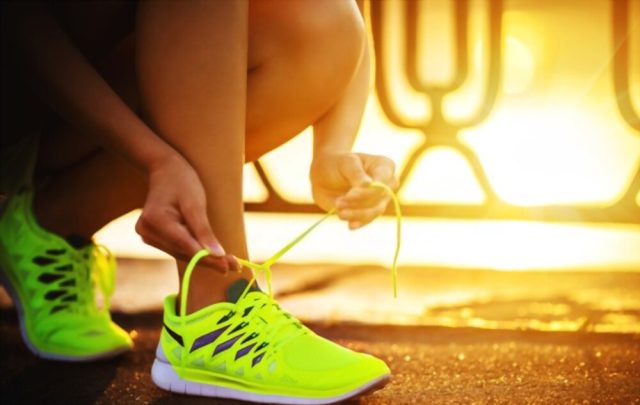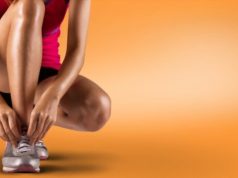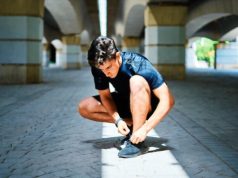When running, your feet are your main form of propulsion. They provide the necessary force to make your journey easier, with fewer lactic acid-induced struggles. Running shoes must be high-quality and crafted with care to ensure optimal support, breathability, and comfort.
You can lace a pair of running shoes in many different ways to get the perfect fit. The lacing techniques used to lace up your running shoes will depend on your foot type. Here’s a list of the most common lacing styles for every foot type, from wide feet to high arches. In this guide, we’ll cover all you need to know about how to tie running shoes, covers types of laces, and what type of foot type they suit best.
Table of Contents
How to tie running shoes:
Try These 3 lacing Techniques :
Lacing techniques can be used to properly secure and fit running shoes, including runner’s heel lock, high arch, and wide lacing. With any of these techniques, the goal is to have a snug fit around the foot but not feel restrictive or tight. By testing different lacing methods and finding the one that works best for your feet, you can enjoy wearing your favorite running shoes without worrying about slipping off mid-race.
01: Runner’s Loop
Runner’s loop is a technique runners use to create a tight fit, preventing their heel from slipping. To use the technique, lace the shoe normally until the next-to-last eyelets and draw the laces backward through the last eyelet to create loops outside the shoe. After creating loops, cross each lace back across the tongue and through the opposite loop to tighten the heel collar and keep the heel in place.
As you lace your shoes, remember to pull your toes slightly inside of your shoes to accommodate any extra room or space between your foot and your shoes. This will help ensure your feet are comfortable and secure during your run.
02: Window Lacing
Window lacing is a technique used to reduce foot discomfort while running. It involves creating a window-like shape around discomfort, such as a bump or blister, and lacing vertically rather than in the traditional crisscross pattern.
Ladder lacing is another alternative technique for reducing pressure on the top of the feet by lacing straight across from eyelet to eyelet.
Other common techniques include gap lacing, wide foot, narrow foot, diagonal lading, and runner’s loop. Most athletic shoes need to lace down the front to keep the shoe from slipping off. However, when using window or ladder lacing, it’s important to follow the manufacturer’s instructions carefully to ensure that the fit is correct and adequate protection is provided.
03: Reef Knot
The reef knot is a popular way to tie running shoes securely and easily. This knot can be applied quickly and easily, making it the perfect option for anyone who wants to tie their shoes hassle-free. To apply the reef knot, cross the laces of your running shoes and snug them down. Next, form the first loop by crossing the lace opposite the direction of the eyelet back over itself.
The second loop should be formed by reversing the path of the lace as you form it. After completing the knot, a pull test should be conducted to ensure that the bow lays perpendicular to the side of the shoe. The reef knot should be distinct from the surgeon’s shoelace knot, also used for running shoes. This knot is secure and easy to apply, making it likely to become one of your go-to knots when tying your shoes.
04: Shoe Laces
To replace worn-out laces, choose laces of the same shape (round, oval, or flat) and length as the previous pair. Switch from round to flat laces and synthetic to natural fibers to loosen knots. For discomfort from sore spots, create a window around the lacing by lacing vertically instead of horizontally.
For snugness, use an elastic lacing system instead of standard shoelace ties. These fasteners are easier to use and don’t stretch out as much, ensuring they’re not too loose. To tie elastic lacing, thread the laces through the eyelets on the shoe and knot them in a bow, then pull until they feel snug.
If your shoes are too tight, consider removing them and loosening the laces gradually rather than digging your feet into them to relieve the pain. Once you’ve found a comfortable fit, keep the laces tied for long periods to avoid damaging your shoes through wear and tear.
Read More: Best Walking Shoes For Overweight Women
Lacing Styles for Your Foot Type
The lacing technique for running shoes can vary depending on your foot type. There are four main lacing styles for different foot types to provide stability and comfort. When using any of these lacing styles, they should provide a sense of self-confidence and ease while running comfortably and safely on trails or pavement.
01: High Arches
Crisscross lacing can help relieve pressure in the middle section of high-arched shoes, especially those with a reduced toe box. Crisscross lacing involves crossing the laces over each other multiple times to provide additional support to prevent supination. Modified crisscross lacing provides additional support to the middle section of high-arch shoes.
In contrast, gap lacing is an effective technique for high arches as it reduces pressure on the instep. Ladder lacing is another effective style for high arches, as it helps reduce pressure on the top of the foot. It is important to adjust the lacing technique to help alleviate pressure from the middle section of the shoe for high arches.
02: Wide Forefoot
When lacing your running shoe, it’s important to pay attention to your foot type. For a wide forefoot, use a lacing technique that allows more space in the toe box. Start by threading the shoelace only through the sides and then crisscrossing the laces from the midfoot onward. For extra room in the toe box, use the “Gap Lacing” pattern and only thread the shoelace through the sides.
Begin lacing with a crisscross from the midfoot onward and make a crisscross through the eyelets to finish. By paying attention to your foot type and using lacing techniques that are right for your shoe, you can create a comfortable and tailored fit that supports your running form.
03: Narrow Foot
For shoes designed to be worn by a narrow foot, the best lacing style to use is crisscross lacing. This method involves lacing the shoe using an eyelet on one side, followed by an eyelet on the opposite side. For high-arched shoes, the gap-lacing style is recommended. In this method, the shoe uses only eyelets along one side of the shoe and none on the other side.
Shoes that are too tight can also result in foot pain and excessive foot fatigue. Instead, choosing a lacing style that supports your feet comfortably while running or performing other activities is important. Other shoe lacing styles to consider include Lydiard laning and diagonal lacing.
04: Overall Wide Feet
The best lacing style for wide feet is the “Gap Lacing” pattern. It involves starting with a crisscross from the midfoot onward and tying the knot at the end as you would normally. Another common lacing style that can provide great comfort for wide feet is ladder lacing. This involves lacing straight across from the eyelet to the eyelet with one lace, alternatingly, without crisscrossing the laces up the side of the eyelets.
The seven-eyelet lacing pattern (ALL) results in the highest pressure on the sole. This may be more comfortable for people with wide feet who want to minimize pressure on their feet. Overall, finding a lacing pattern that fits your needs and preferences and provides maximum comfort is important.
05: High Midfoot
The high midfoot lacing pattern is the most comfortable for high-arched runners. This lacing pattern has the laces running over the middle of the foot, which results in the least amount of pressure on the sole. The seven-eyelet lacing pattern provides the highest levels of shoe support and stability. The ladder lacing pattern reduces pressure on the top of the foot by allowing the laces to cross over only at the metatarsals. Gap lacing is named for its gap in the shoe’s middle, which allows for high arches and provides greater flexibility and mobility.
The gap lacing style can be used to avoid a sensitive area or to accommodate different foot shapes and sizes. It also helps to increase ankle flexibility for trail running or other activities that require a flexible shoe. High midfoot lacing patterns are typically found in running shoes but can also be used in other types, such as dress shoes.
Frequently Asked Questions
What is the proper way to lace running shoes?
There are many different ways to lace running shoes, and it ultimately depends on the type of runner you are. However, one of the most common methods is skipping one or two crisscrosses when lacing up your shoes. Skipping these crossings helps to reduce midfoot soreness caused by swelling during a run.
Should running shoes be tied tight or loose?
When tying running shoes, the most important thing to remember is to tie them securely and snugly. To do this, you should use the runner’s knot, which creates a tight connection at the top of the foot by connecting the top eyelets on either side of the tongue. This way, the pressure on the extensor tendons is reduced, providing better stability and reducing impact.
When lacing running shoes, it’s best to create a comfortable fit that eliminates any possible blisters or pain. However, if your shoes still need to be tight enough after following these guidelines, you may need to try a different shoe-lacing pattern.
How do you tie running shoes to prevent heel slippage?
To tie running shoes to prevent heel slippage, you’ll need to use heel lock lacing. Heel lock lacing is a technique to prevent heel slippage when running on uneven surfaces.
Thread the left lace of each shoe through the top-left eyelet and the right lace through the top-right eyelet. Tie the shoe using a runner’s knot for added foot protection. Try Runner’s Loop or Heel-Lock Lacing for a super-tight fit.
Conclusion
Now that you’re equipped with the right lacing techniques, you can lace your running shoes and start running like a pro. When done correctly, these lacing techniques ensure your running shoes stay tight and secure while allowing your feet to breathe. You can opt for the most comfortable for your feet and get the most out of your running experience. Happy lacing!





